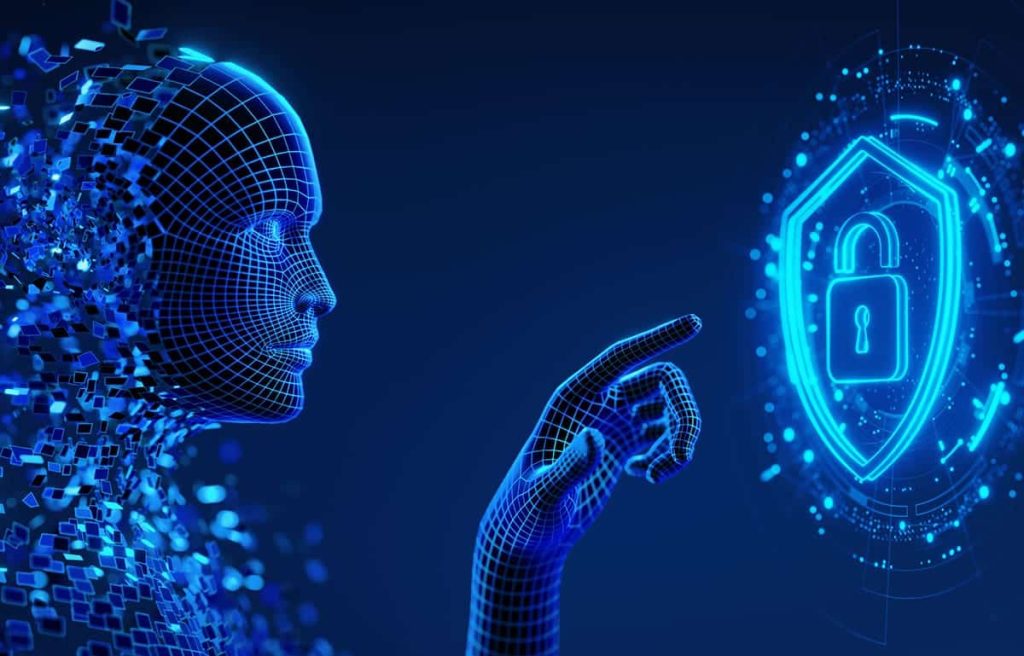Introduction
In today’s hyperconnected world, cybersecurity has become one of the most critical challenges facing individuals, businesses, and governments. The rise of Artificial Intelligence (AI) has transformed nearly every digital process, and with it, the threat landscape has evolved as well. Cybercriminals are now leveraging AI to design more sophisticated attacks, while cybersecurity experts are using the same technology to defend against them. This technological tug-of-war is shaping the future of digital security.
As AI becomes more integrated into our devices, systems, and networks, cybersecurity strategies must evolve to keep up with increasingly intelligent threats. The result is a rapidly changing digital battlefield where automation, data, and intelligence are key to survival.
Table of Contents
The Role of AI in Modern Cybersecurity
Artificial Intelligence has become a double-edged sword in the field of cybersecurity. On one side, it empowers defenders with automated detection systems and predictive analytics. On the other, it gives hackers powerful tools to launch faster, smarter, and more evasive attacks.
AI-driven cybersecurity systems can now analyze billions of data points in real time to identify suspicious activity. Unlike traditional security systems that rely on predefined rules, AI uses machine learning algorithms to detect anomalies and adapt to new threats dynamically.
For example, AI can detect unusual login attempts, irregular data access patterns, or strange network behavior and alert administrators before a breach occurs.
Machine learning models continuously improve by learning from past attacks, making them more effective at identifying future threats. This evolution has turned cybersecurity into a proactive discipline rather than a purely reactive one.
AI-Powered Threat Detection and Response
Traditional cybersecurity tools depend heavily on signature-based detection, which struggles to keep pace with emerging threats. In contrast, AI enhances threat detection by identifying behavioral patterns that deviate from the norm, even if the exact threat has never been seen before.
For instance, AI-based Security Information and Event Management (SIEM) systems can process vast amounts of network data to pinpoint vulnerabilities or active intrusions in real time. This allows organizations to respond to attacks in seconds rather than hours.
Automated incident response systems are another major advancement. Once a potential threat is detected, AI can automatically isolate affected devices, shut down suspicious processes, and trigger alerts for further investigation.
Such capabilities are essential in an era where cyberattacks can cripple businesses within minutes.
The Rise of AI-Driven Cyberattacks
While AI strengthens defense systems, it also provides cybercriminals with advanced capabilities. Hackers are now using machine learning to create intelligent malware that can adapt, hide, and exploit vulnerabilities faster than ever.
AI can automate phishing campaigns by analyzing social media profiles to craft highly personalized messages that trick users into revealing sensitive data.
Deepfake technology has introduced another layer of complexity to digital deception. Cybercriminals can now use AI to generate realistic fake videos or audio recordings, making it difficult to distinguish between real and fabricated content.
In addition, AI-powered password cracking tools can predict or brute-force passwords with unprecedented speed, significantly increasing the success rate of cyber intrusions.
This ongoing arms race between attackers and defenders makes cybersecurity one of the most rapidly evolving fields in technology.
AI in Cloud and Network Security
As organizations increasingly migrate to cloud environments, protecting data stored across distributed networks has become a major priority. AI plays a crucial role in monitoring and securing these systems.
Cloud service providers are using AI to detect unauthorized access, identify misconfigurations, and monitor for data leaks.
Network traffic analysis powered by AI helps identify unusual activities such as data exfiltration, denial-of-service attempts, or lateral movement within systems.
By correlating millions of signals in real time, AI enables security teams to detect and respond to threats faster than human analysts could manage alone.
Predictive Cybersecurity: Staying Ahead of Threats
One of the most promising aspects of AI in cybersecurity is predictive analysis. Using big data, AI can anticipate potential vulnerabilities and identify attack vectors before they are exploited.
By analyzing global threat intelligence data, AI systems can forecast emerging risks and prepare defenses accordingly. For example, if certain types of ransomware are becoming more active in a particular region, AI tools can strengthen protections in advance.
Predictive cybersecurity also reduces downtime by automatically patching vulnerabilities and recommending preventive actions. This proactive approach represents the next major shift in how organizations secure their digital assets.
Ethical and Privacy Concerns
While AI offers powerful tools for cybersecurity, it also raises important ethical and privacy questions. The same algorithms that protect data can also be used for mass surveillance if misapplied.
There is a growing concern about the use of AI in monitoring online behavior, potentially violating privacy rights. Additionally, algorithmic bias can lead to unfair or inaccurate risk assessments, particularly when models are trained on incomplete data.
Developing transparent, explainable AI systems is therefore essential to ensure that cybersecurity solutions are both effective and ethical.
The Human Element in AI Cybersecurity
Despite the automation AI brings, human expertise remains irreplaceable. Cybersecurity professionals play a critical role in interpreting AI insights, setting ethical standards, and making judgment-based decisions that machines cannot.
AI systems are only as good as the data they are trained on, which means human oversight is vital to maintaining accuracy and fairness. Moreover, human creativity and intuition remain unmatched in understanding complex attack motives and designing adaptive defense strategies.
The most successful cybersecurity systems combine machine intelligence with human insight, forming a partnership that enhances both speed and strategy.
The Future of Cybersecurity in the AI Era
The future of cybersecurity will depend on collaboration between humans and AI-driven systems. As threats grow in scale and sophistication, automation will become indispensable in protecting digital infrastructure.
We can expect to see greater integration of AI in identity management, fraud detection, and zero-trust security frameworks. Organizations that invest in AI-based cybersecurity today will be better prepared for tomorrow’s challenges.
Ultimately, the goal is not to eliminate cyber threats entirely but to stay one step ahead of them. By combining human expertise, artificial intelligence, and ethical governance, cybersecurity in the age of AI can create a safer and more resilient digital world. Also Check Future of Artificial Intelligence in Everyday Free Life 2025







1 thought on “How Cybersecurity is Evolving in the Free Age of AI – 2025”